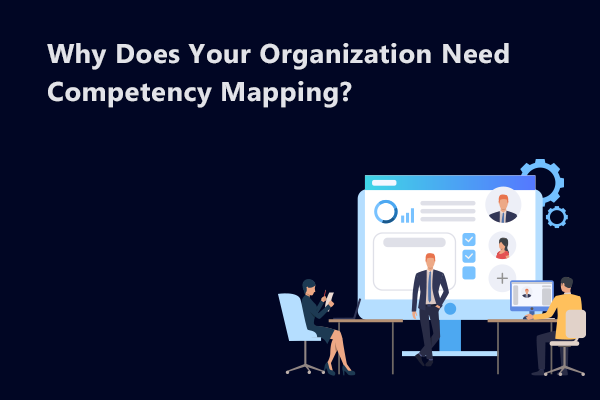
Why Does Your Organization Need Competency Mapping?
Competency Mapping is defined as a process imperative for identifying the primary competencies for a particular job role in an organization. It is a behavioral trait that analyzes a person’s competencies to meet his/her position requirements and other organizational parameters. It is used for recruitment, training, management, performance analysis, and succession planning.
Thus, competency is described as a quality or skill that helps companies during employment evaluation, recruitment, and training.
Types of Competency Mapping
Typically, there are four types of competency mapping:
- Intellectual Competency: This ability determines an individual’s intellectual capabilities and skills. The elements of intellectual competence include communication skills, creativity, analytical thinking, problem-solving, planning, and organizing.
- Motivational Competency: It involves increasing the motivational level of an employee to boost his/her output. The elements of motivational competency include time management, continuous learning attitude, perseverance, and achievements orientation.
- Emotional Competency: It involves determining the emotional quotient of an employee to enhance optimism and self-confidence. The elements of emotional competence include taking initiative, optimism, combating stress, and developing leadership skills.
- Social Competency: It refers to developing social skills in an employee such as interpersonal skills and a mentality to participate in teamwork. The elements of social competency include responsibility, personality development, and customer satisfaction.
How To Build Competency Models?
There are three ways in which competency models are built.
- Behavioral Indicators: It denotes the behavioral traits, thought patterns, and capabilities that are required to enhance employee performance.
- Competency Level Evaluation: Before building competency models, it is crucial to set standards for exceptional performers and compare their levels with other employees.
- Competency Specific To Job Requirements: This model is vital when organizations have multiple competencies. The competencies needed in a specific job might be different. Therefore, it is best to design a job-specific competency model for efficient structuring of compensation and appraisal decisions.
Importance Of Competency Mapping
In recent years, competency mapping has been in high demand in many organizations. This is due to its role in various aspects of employee selection and performance management. Competency mapping can be built upon the present competencies of a company and covers personal, professional, and technical competencies in a highly flexible manner. Thus, it has become mandatory to have a competency map ready in today's corporate world.
- Competency Mapping helps to increase the effectiveness of existing skills and mends the skill gaps in an organization.
- It is crucial to ensure that employees are being directed in the right direction.
- It helps in guiding the capabilities to improve overall productivity.
- It is a method to build trust between the employer and the employees.
- Competency ensures the employees can meet immediate company objectives and long-term goals.
- It helps in integrating good management practices and processes.
Benefits of Competency Mapping
The most important benefit of competency mapping is that it lays down the standards for employee training and development according to specific organizational requirements. It is a focussed method that evaluates efficiently how an employee works and the time needed to complete a given task. Creating the competency map is useful for analyzing the skills, knowledge, abilities, and behaviors required for each unit of a particular job.
The various advantages of competency mapping are listed below:
- Helps an organization to modify their work style positively and increase existing standards of production.
- Facilitates the organization to align its key objectives and strategies for development across various departments to achieve accurate long-term results.
- Helps employees to understand their roles and responsibilities and the scope of the project in an effective way.
- Establishes standards and sets expectations from employees working at different positions in the organization.
- Helps in job satisfaction and enhances customer experience.
- Drives growth through training and development, as this is the primary method to increase efficiency and meet success.
Thus, competency mapping provides an ongoing coaching system for employees and sets the benchmark for work standards. Moreover, it highlights if any employee requires additional training or specialized courses to meet their performance targets. Therefore, this method is beneficial for both organizations and employees to witness rapid growth and development.
Conclusion
A competency model or map is useful for selection, recruitment, management, deployment, evaluation, planning, training, and overall career development. These maps not only define what is imperative for organizational development but also lay down a solid foundation for integrating human resource systems, such as staffing, promotion, training, planning succession, and performance management.
At Learnow, we assist leaders to inculcate a culture of growth and development with an employee-first approach. We help you to build an employee success roadmap by assessing the current pitfalls and understanding present learning requirements for employees. Are you interested to know more about the methods, processes, and types of competency mapping? Transform learning and development in your organization through corporate training at https://www.learnow.live/ and improve your employee efficiency in no time.
